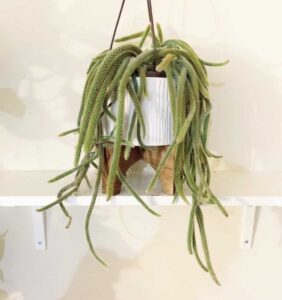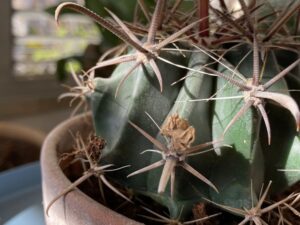Amidst the arid expanses of deserts, where life seems to be an extravagant paradox of resilience and beauty, the prickly pear cactus fruit, or cactus tuna, emerges as a succulent gem. This delightful fruit, cloaked in an exterior of spines, serves not only as a testament to nature’s ingenuity, but also as a tantalizing addition to the culinary world. To embark on a journey of discovery, this guide will illuminate the path of harvesting, preparing, and savoring this exquisite fruit in all its glory.
Understanding the Cactus: A Flora of Many Faces
The cactus plant, often associated with the harshness of desert environments, is an oasis of wonder. Cactus fruit, particularly from the Opuntia species, can be found in vibrant hues of magenta, yellow, and green. The fruit exudes a sweet, slightly tart flavor reminiscent of strawberries and watermelon, with a texture akin to that of a kiwi. What makes this fruit truly remarkable is its composition; rich in antioxidants, vitamins, and dietary fiber, consuming cactus fruit not only tantalizes the palate but also fortifies one’s health.
Harvesting Cactus Fruit: The Art of Foraging in Nature’s Garden
Engaging with the wild can be a fulfilling experience, and harvesting cactus fruit is no exception. However, this endeavor calls for caution and respect for the environment. Equipped with sturdy gloves and a pair of tongs, a fruitful harvest awaits.
Location is paramount when seeking these delectable fruits. Prickly pears thrive in warm regions, often found in Arizona, Mexico, and parts of South America. Observe the hues; when the fruit is vibrant and free of blemishes, it’s ripe for picking. Gently twisting or cutting the fruit from the pads of the cactus ensures the plant remains unharmed, allowing it to flourish for future harvests.
One must remain vigilant of the tiny spines, known as glochids, which can easily attach to the skin. An experienced harvester knows that caution and patience are key, as the transformative experience of tasting freshly picked cactus fruit is well worth the labor involved.
Preparing Cactus Fruit: A Culinary Transformation
The preparation of cactus fruit is a rite of passage that embraces creativity and flair. The vibrant colors and intriguing textures command attention in any culinary setting. To begin, remove the glochids, which can be achieved by briefly scorching the skin over an open flame or a hot pan. This quick process assists in barring any painful encounters with the spines.
Once the glochids are dispatched, cut off both ends of the fruit. Using a sharp knife, slice down the length of the skin and peel it back like a delicate ribbon to reveal the luscious, jewel-toned flesh inside. This fruit can be enjoyed fresh, but its versatility allows it to lend itself beautifully to various culinary creations.
The fruit can be cubed and tossed into salads, offering a burst of unexpected sweetness that elevates the dish. Alternatively, it can be blended into smoothies, where its vibrant color and flavor inject a lively essence. For a more adventurous approach, consider making cactus fruit jam or syrup, transforming the fruit into a sweet spread for your morning bread, or a syrup for decadent desserts.
Serving Cactus Fruit: A Celebration of Flavors and Presentation
The magic of cactus fruit lies not only in its flavor but also in its visual allure. When serving, the vibrant fruits can be showcased whole or in small clusters, resembling a playful bouquet. Pair them with complementary flavors—think lime, mint, or even a hint of chili pepper—to create an enchanting balance. This fruit can grace desserts, lending a refreshing contrast to rich purses of chocolate or cream.
For the beverage enthusiast, cactus fruit can be transformed into a vibrant margarita or a refreshing agua fresca, seamlessly weaving its unique flavor into the fabric of festive gatherings. The possibilities are as endless as the colors of the desert sky at dusk, beckoning one to explore the rich dimensions that this modest fruit offers.
The Ecological and Cultural Significance: A Bridge Between Life and Landscape
Beyond gustatory pleasures, the cactus fruit weaves itself into the cultural tapestry of many communities. Spanning indigenous practices, this fruit has been a staple for centuries, providing essential nutrients in regions where food sources may be limited. Its resilience in harsh environments embodies a philosophy of survival and ingenuity, making it a symbol of sustenance for myriad cultures.
Furthermore, the ecological role of the cactus itself cannot be overlooked. These majestic plants support a diverse array of wildlife, playing a crucial role in their ecosystems. By absorbing rainwater and storing it, they become reservoirs of life, nurturing both the land and those who inhabit it.
In conclusion, the journey of harvesting and enjoying cactus fruit is a reflection of the extraordinary relationship between nature and nurture. From its harvesting in the wild to its transformation in the kitchen, every step celebrates the fruit that thrives under the sun’s embrace. Explore this colorful bounty—the prickly pear is not merely a fruit; it is an adventure waiting to be tasted and cherished.




Leave a Comment